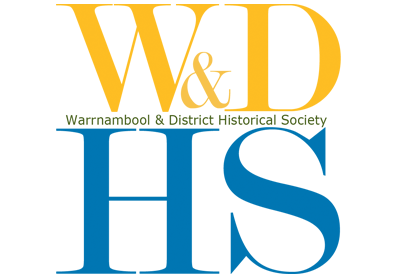The Great Industrial and Art Exhibition
The Great Industrial and Art Exhibition in Warrnambool in 1896-97 was an exciting affair for the town and the surrounding area. People came from far and wide to be enlightened, educated and entertained, with 70,000 visitors passing through the doors during the three months of the exhibition. Not bad for a town with a population of only 6,500 and a further 9,200 living in the surrounding shire!
Planning began at a public meeting attended by 60 people in May 1896 and the exhibition opened in December the same year on the site of the current Light House Theatre. The architects submitted plans for four annexes, complete with turrets, a fernery and a giant flagpole. The site covered 1 acre and included a Marine court, industrial exhibits, an education court, defense and agriculture court, stalls, coach builders, dairy show, an art court and provision for a smorgasbord of various entertainment. (The Story of the Warrnambool Industrial & Art Exhibition 1896-97- E O’Callaghan)
Tommy Rome who ran a boot wear business at 115 Liebig Street (Pitstop menswear) had a stand at the exhibition that displayed one of the highlights of the exhibition – an Edison Wax Cylinder phonograph and recording device costing 42 pounds, equal to a years wage for a domestic servant! The ‘Machine that Talks, Whistles, Laughs and Sings’
Tommy recorded John Villiers (an accomplished local vocalist with the unsurpassed ability to cackle like a hen) singing a comic song with some piano accompaniment and lots of chook noises! This is the earliest known surviving Australian sound recording. The recordings were donated to the Performing Arts Museum in Melbourne and have since been passed to the National Sound Archive in Canberra.
It is clear that Tom was not very proficient sound recordist as the chooks drown out the piano and vocalist a bit. If you use your phone to follow this link you can listen to the song. Everyone around you will think you are mad, but give it a go.
Another highlight of the exhibition was the use of electricity – the first time most residents had seen this exciting invention. Electric lighting was not available in Warrnambool until about 30 years later. The Echo of December 1896 reported:-
‘The glowing bulbs of the arc lamps were the subject of curious scrutiny by visitors last evening, many of whom had never have seen the light before. The lamp on the flagpole at the intersection of Timor and Liebig Streets is a conspicuous object at night, and acts as a good guide to the Exhibition.’
The same corner in 2016 is washed with a range of coloured and flashing lights and great activity - particularly on Saturday nights. Picture that space as it would have been in 1896.

